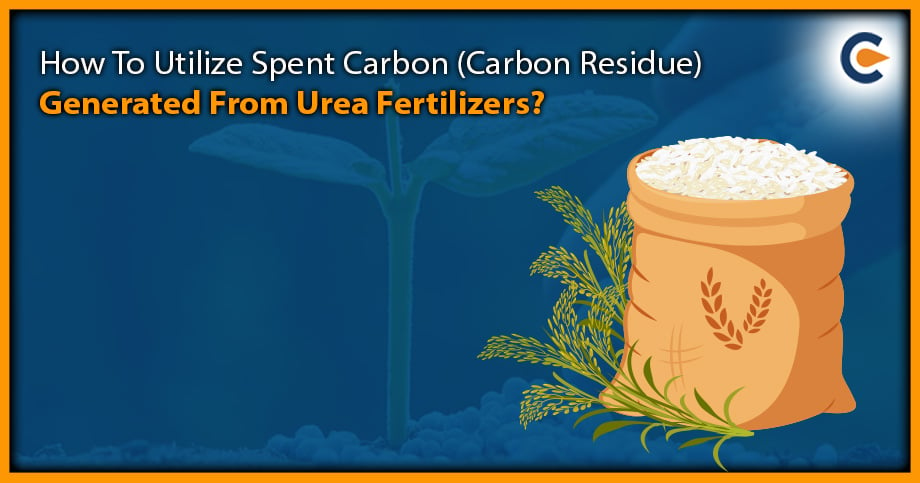Spent carbon or carbon residue is generated during the production of urea fertilizers. It is a hazardous waste that needs to be managed carefully to prevent environmental pollution. Utilization of Spent Carbon is possible through a process called co-processing. In this process, the spent carbon is mixed with water to form a slurry, which is then injected into a carbon black reactor as a quench liquor. The unit must ensure that all personnel involved in the plant operation wear proper personal protective equipment for safety. A logbook must be maintained with information on the source, quantity, and date-wise of spent carbon, product recovered, hazardous waste generated, etc. The unit must also file quarterly and annual information on spent carbon consumed, quantity utilized, product manufactured, hazardous waste generated, and resources conserved with the concerned SPCB.
Procedure for Grant of Authorization by SPCBs/PCCs for Utilization of Hazardous Waste
While granting authorization for utilization of hazardous wastes, SPCBs/PCCs must ensure the following:
- The waste for utilization should come from the same source and follow the same process described in SOPs.
- The end-use or product produced from the waste must be following the SOPs.
- Granting of authorization is subject to verification of the utilization process and minimum facilities required as per the SOPs.
- Passbooks should be issued to record the receipt of hazardous waste for utilization, like the ones issued for recycling used oil, waste oil, and non-ferrous scrap.
- SPCB will conduct quarterly verification of utilization process, checklist, and SOPs for the first two years after authorization, followed by random checks at least once a year.
- Suppose SPCB/PCC lacks the necessary infrastructure. In that case, they can engage third-party institutions or labs with EPA/NABL/ISO17025 accreditation/recognition to monitor and analyse prescribed parameters in SOPs for verification purposes.
- SPCBs will provide CPCB with an updated list of units permitted under Rule 9 of HOWM Rule 2016 on a half-yearly basis and periodically upload it to their website. These updated lists will be sent to CPCB twice a year, i.e., in July and January.
- Units located in states or UTs without a Common TSDF will only be authorized for utilization if they ensure the SoP for how to utilize Spent Carbon released by the pollution Board and perform captive disposal of hazardous waste generated during utilization, as well as arranging for its complete utilization, or share it with another authorized disposal facility. Suppose the proposed utilization process does not match the SOP’s source of generation, utilization process, or end-use. In that case, it may be referred to the CPCB for clarification or for conducting trial utilization studies and developing SoPs.
- While the source and work zone standards in the SOPs are based on EPA and OSHA standards, SPCB/PCC can impose stricter standards based on location or process-specific conditions.
Standard Operating Procedure for How to Utilize Spent Carbon
This SoP is applicable only for utilization of Spent Carbon (Carbon Residue) generated from the Urea fertilizer manufacturing plant as a supplementary resource in the manufacturing of Carbon Black.
- The Spent Carbon (Carbon Residue) with 85% moisture should be procured in non-reactive drums/containers according to the provisions outlined in the Hazardous and Other Wastes (Management and Transboundary Movement) Rules, 2016.
- A designated space should be provided for Spent Carbon (Carbon Residue) storage in a cool, dry, well-ventilated, and covered storage shed authorized by the concerned SPCB/PCC under the HoWM Rules, 2016 to prevent water intrusion. The shed should have an impervious lined floor, adequate slope, and a seepage collection pit. Loading/unloading of Spent Carbon (Carbon Residue) should also take place under the covered shed.
- The seepage from the collection pit should be pumped into a mixing vessel/slurry preparation tank to mix with water and feed into the Carbon Black Reactor.
- Spent Carbon (Carbon Residue) not in cake form should be stored in a silo, and loading into the silo should be done mechanically using a pump.
- Mechanized systems should be used to transfer the spent carbon (Carbon Residue) directly to the slurry preparation tank, with no manual handling involved.
- Utilization Spent Carbon (dry weight) should not exceed 5% of the product, i.e., Carbon black manufactured.
- The carbon slurry and water mixture should be injected into the reactor to quench liquor through a pipeline. The reactor must maintain a temperature of at least 2000°C. Utilization of Spent Carbon is not permitted during unstable/breakdown conditions in the reactor.
- Personnel with the sound knowledge of how to utilize Spent Carbon should also ensure proper personal protective equipment such as masks, gloves, goggles, and shoes suitable for power plant operation.
- Before utilizing spent carbon, the unit must obtain authorization for its generation, storage, and utilization from the concerned State Pollution Control Board under the Hazardous and Other Wastes (Management & Transboundary Movement) Rules, 2016.
- Hazardous wastes generated from the utilization process, such as contaminated gloves, masks, dusters, liners, etc., should be collected and stored temporarily in drums/bags in a dedicated hazardous waste storage area within the unit premises.
- The sender or receiver (utilizer) must obtain authorization from the concerned SPCB under the Hazardous and Other Wastes (Management & Transboundary Movement) Rules, 2016, for the transportation of the waste.
- Suppose environmental damages arise due to improper handling of hazardous wastes, such as accidental spillage during generation, storage, processing, transportation, and disposal. In that case, the unit will be held liable and must implement immediate corrective measures, environmental site assessment, and remediation of contaminated soil/groundwater/sediment, as per the “Guidelines on Implementing Liabilities for Environmental Damages due to Handling & Disposal of Hazardous Wastes and Penalty” published by CPCB.
- The unit must comply with the requirements per the Public Liability Insurance Act, 1991, as amended, wherever applicable, during the utilization and handling of hazardous waste.
Records & Returns
The following records and returns required to be maintained for utilization of Spent Carbon:
- The unit is required to keep a passbook issued by the concerned SPCB/PCC.
- The passbook must contain the following details
for each procurement of Spent Carbon (Carbon Residue):
- Address of the sender
- Date of dispatch
- Quantity procured
- Seal and signature of the sender
- Date of receipt in the premises.
- The unit is required to provide quarterly and annual reports to the concerned SPCB detailing the amount of Spent Carbon (Carbon Residue) used, quantity utilized, product manufactured, hazardous waste produced, and resources conserved, specifying the type and quantity of resources conserved.
- A log book should be maintained to record information on source, quantity, and date-wise data on How to utilize Spent Carbon (Carbon Residue), product obtained, hazardous waste generated, and analysis report of emission monitoring & effluent discharged as applicable.
- The unit must maintain a record of hazardous waste generated, utilized, and disposed of as per Form 3 and submit annual returns in Form 4 as per Rule 20(1) and (2) of the Hazardous and Other Wastes (Management and Transboundary Movement) Rules, 2016, to SPCB.
Documents Required
The documents required utilising Spent Carbon is as follows:
- Authorization for generation, storage: This authorization needs to be obtained from the concerned SPCB under the Hazardous and Other Wastes (Management & Transboundary Movement) Rules, 2016.
- Quarterly and annual reports: The unit shall submit quarterly and annual information on spent carbon consumed, quantity utilized, product manufactured, hazardous waste generated, resources conserved, etc., to the concerned SPCB.
- Record of hazardous waste generated: The unit shall maintain records of hazardous waste generated, utilized, and disposed of as per Form 3 and shall file annual returns in Form 4 as per Rule 20(1) and (2) of the Hazardous and Other Wastes (Management and Transboundary Movement) Rules, 2016, to SPCB.
- Logbook: A log book shall be maintained with information on the source and quantity data on how to utilize spent carbon, product recovered, hazardous waste generated, etc., and a record of the analysis report of emission monitoring & effluent discharged, as applicable, shall be maintained.
- Passbook: The unit shall maintain a passbook issued by the concerned SPCB/PCC wherein the following details with respect to each procurement of spent carbon residue shall be entered: address of the sender, date of dispatch, quantity procured, seal and signature of the sender, date of receipt in the premises.
- Public Liability Insurance: During the process of utilization and handling of hazardous waste, the unit must comply with the requirements following the Public Liability Insurance Act, 1991[1], as amended, wherever applicable.
Conclusion
Businesses that know how to utilize spent carbon generated from urea fertilizers can offer significant economic, environmental, and operational benefits. It reduces waste generation, conserves resources, and provides a cost-effective alternative to traditional raw materials. However, the utilization process requires careful planning, monitoring, and reporting to ensure compliance with regulatory requirements and minimize environmental and health risks. Therefore, seeking expert consultation from professionals who can guide the best practices, technologies, and regulations related to spent carbon utilization is essential. Expert consultation can help ensure that the utilization process is safe, efficient, and effective and that all regulatory requirements are met. This can lead to better outcomes for both the industry and the environment, promoting sustainable development in the long run.
Read Our Article: Responsibilities Of SPCB In India: Explained











